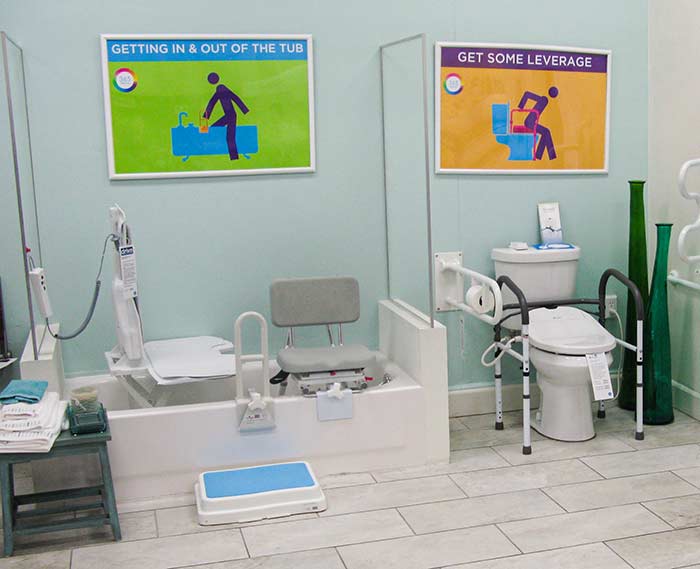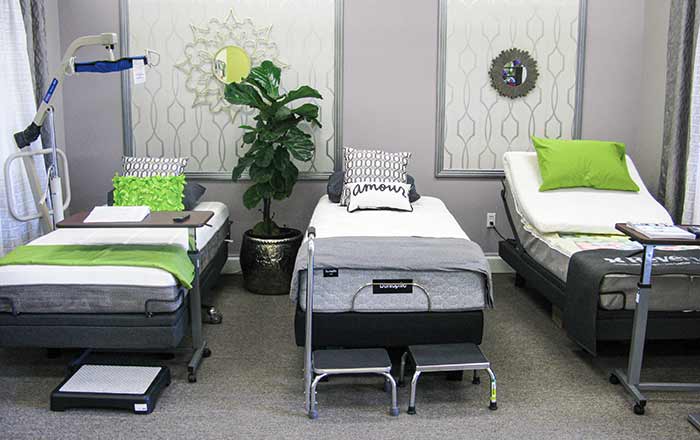
An entryway display with stairlifts. Photo courtesy of Access to Independence.
3 ways to showcase HME equipment for retail
Tuesday, October 8, 2019
Dorothy said it best: “There’s no place like home.”
If you want to succeed in growing your retail cash-and-carry business, it is so important to build a home experience within your home medical equipment (HME) store or pharmacy. This will allow potential customers to imagine how HME products will fit in their day-to-day lives.
I am a huge advocate of building out three distinct rooms within your storefront: a bathroom, a bedroom and a living room. Incorporating these layouts can drastically change the consumer shopping experience when they walk into your business.
 A retail-ready bathroom display. Photo courtesy of Mobül.
A retail-ready bathroom display. Photo courtesy of Mobül.
 A retail-ready bedroom display. Photo courtesy of Mobül.
A retail-ready bedroom display. Photo courtesy of Mobül.
1. The Bathroom
Imagine a patient walking into an area of your store and instead of seeing a simple bath safety planogram on your walls, they see a commode, a shower and a bathtub. They step onto the tile floors you’ve put down and immediately feel as if they are in an actual bathroom. Now the patient who just had hip replacement surgery can truly try out what sitting on a raised toilet seat at home will feel like. Grab bars in elegant copper and brass finishes suddenly look like elegant home décor, not medical equipment. The products become relatable and make sense to the patient as they can see how they will actually look set up in their own bathroom. A retail-ready bathroom display. Photo courtesy of Mobül.
A retail-ready bathroom display. Photo courtesy of Mobül.2. The Bedroom
Put down carpet to carve out an area on your showroom floor to establish a bedroom. Set up a hospital bed and dress it with nice linens and a comforter. Add a nightstand, lamp and a piece of art to finish the look. Place an overbed table next to the hospital bed with a copy of the latest issue of Southern Living magazine on top. This makes HME products look less institutional—a key area of concern for many patients as they age in place in their home. Not only can the patients you serve imagine these products in their own bedrooms, they can try out items on carpet to experience what using them in their own homes will be like. This will not only drive top-line revenue for your store, but also help to lower your return rates by allowing patients to test products on the different surfaces they may have in their homes. A retail-ready bedroom display. Photo courtesy of Mobül.
A retail-ready bedroom display. Photo courtesy of Mobül.